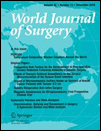Whole-Body Computed Tomography During Initial Management and Mortality Among Adult Severe Blunt Trauma Patients: A Nationwide Cohort Study
Electronic supplementary material: The online version of this article (https://doi.org/10.1007/s00268-018-4732-5) contains supplementary material, which is available to authorized users.
Abstract
Background
Whole-body computed tomography (WBCT) is increasingly being incorporated into the initial management of blunt trauma patients. Several observational studies have suggested that, compared to selective CT, WBCT is associated with lower mortality. In contrast, a randomized controlled trial found no significant difference in survival between patients undergoing WBCT compared to selective CT. Our objective was to confirm the association between WBCT and in-hospital mortality among adult severe blunt trauma patients.
Methods
This was a retrospective cohort study based on Japan Trauma Data Bank 2004–2015 registry data. The study population comprised adult severe blunt trauma patients with at least one abnormal vital sign: systolic blood pressure ≤100 mmHg, heart rate ≥120, respiratory rate ≥30 or ≤10, or Glasgow Coma Score ≤13. The primary outcome was in-hospital mortality. To adjust for both measured and unmeasured confounders, we performed instrumental variable (IV) analysis to compare the in-hospital mortality of patients undergoing WBCT with those undergoing selective CT.
Results
Of 40,435 patients who were eligible for this study, 19,766 (48.9%) patients underwent WBCT. The proportion of patients undergoing WBCT significantly increased during the study period, from 10.7% in 2004 to 59.6% in 2015. Primary IV analysis showed a significant association between WBCT and lower in-hospital mortality (odds ratio 0.84, 95% confidence interval 0.72–0.98).
Conclusions
WBCT can be beneficial in patients with blunt trauma which has compromised vital signs. These findings from a nationwide study suggest that physicians should consider WBCT for blunt trauma patients when warranted by vital signs.




